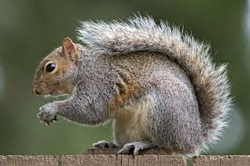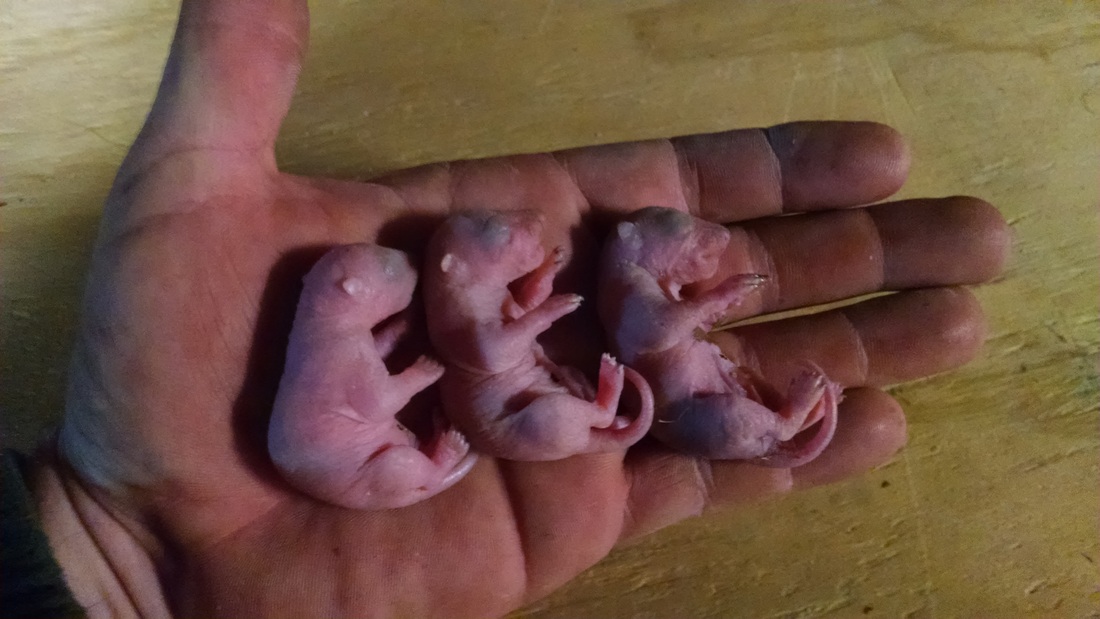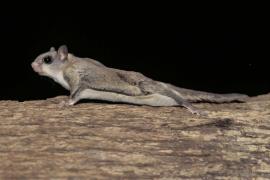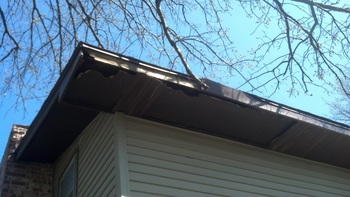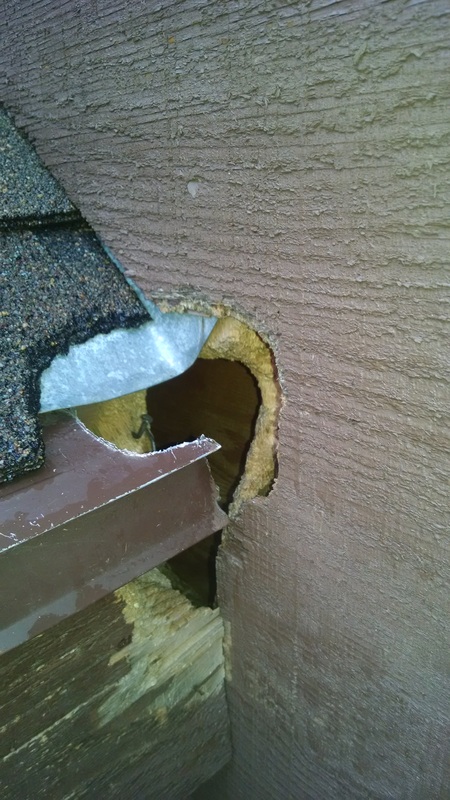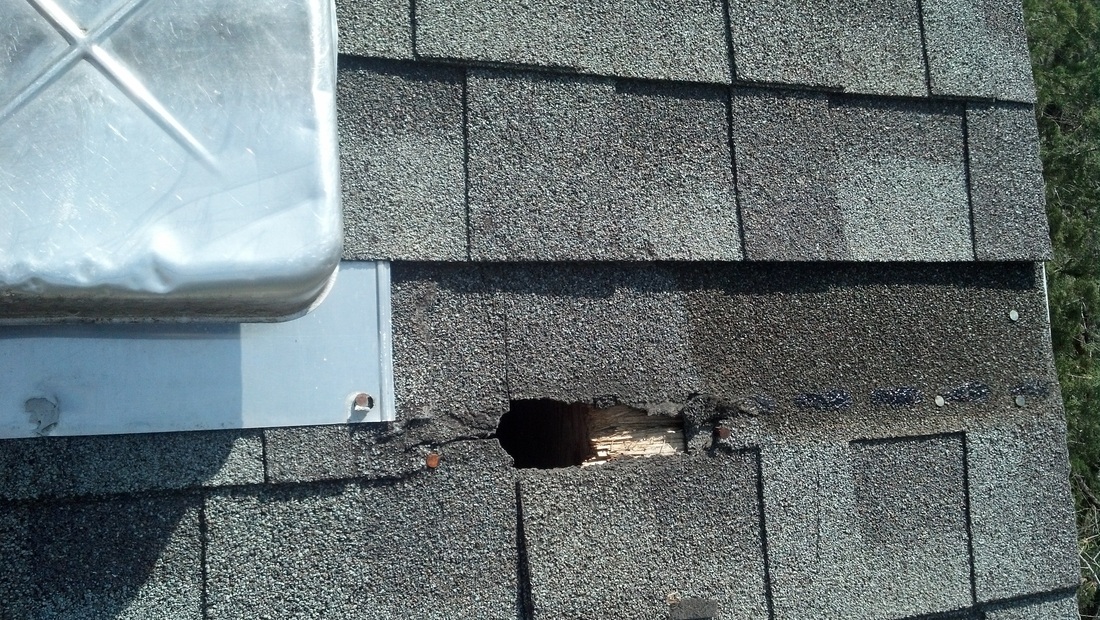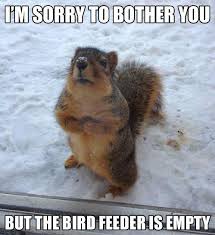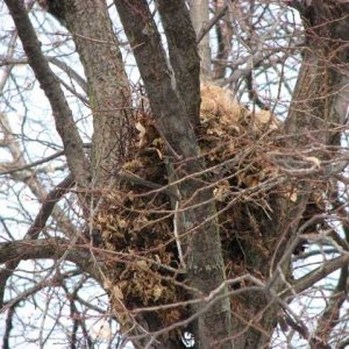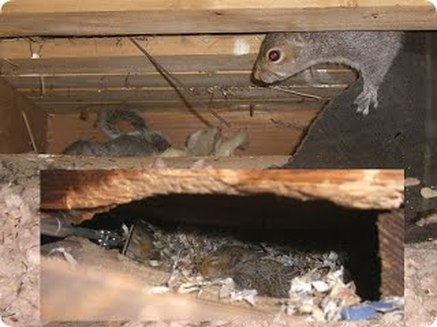Wildlife Damage Prevention & Control Solutions:
Squirrels are active year-round and can be controlled whenever they are causing damage. Care must be taken to avoid abandoning young during the period of time when young may be present, which can be February thru August, as some species may mate twice a year.
Habitat Modification
Habitat modification is often a very effective means of controlling squirrel damage. This method of control is achieved by trimming trees and tree limbs back 8 to 10 feet away from affected structures to prevent squirrels from jumping onto rooftops. Other plants, such as ivy and shrubs, that allow access should be trimmed as well. In yards where squirrels are causing problems at bird feeders, consider providing an alternative source of food. Wire or nail an ear of corn to a tree or wooden fence post away from where the squirrels are causing problems.
Exclusion
Wildlife exclusion is defined as: The techniques and products that prevent wildlife from entering an area or structure. Squirrels can be prevented from climbing isolated trees and power poles by encircling them with a collar of metal 2 feet wide, approximately 6 feet off of the ground. Close all openings to attics, soffits, and other parts of buildings but make sure to not trap squirrels inside. They may cause a great deal of damage in their efforts to chew out.
Trapping
While habitat modification and exclusion methods prove effective in controlling squirrels, sometimes it is necessary to trap and remove "the problem squirrel(s)". This is achieved by mounting specially designed "positive catch" traps to the structure. As the resident squirrel(s) leave the entry/exit point, it enters directly into a cage trap for relocation.
Prevention
Negative wildlife interactions can be prevented through the use of several different prevention products. Chimney caps are very important in preventing entry of a host of wildlife, including squirrels. Roof vent guards are available for many different roof vent configurations and applications. They are also available for power vents (a common entry point for squirrels). Prevent squirrels from traveling on wires leading to and from your home using products such as criterguard. Dryer vents are also occasional entry points for squirrels and other rodents, and should be protected with a vent cover. In short all cracks ,crevices, and voids should be filled or addressed in some way around the perimeter of all structures in an effort to discourage wildlife entry.
Squirrels are active year-round and can be controlled whenever they are causing damage. Care must be taken to avoid abandoning young during the period of time when young may be present, which can be February thru August, as some species may mate twice a year.
Habitat Modification
Habitat modification is often a very effective means of controlling squirrel damage. This method of control is achieved by trimming trees and tree limbs back 8 to 10 feet away from affected structures to prevent squirrels from jumping onto rooftops. Other plants, such as ivy and shrubs, that allow access should be trimmed as well. In yards where squirrels are causing problems at bird feeders, consider providing an alternative source of food. Wire or nail an ear of corn to a tree or wooden fence post away from where the squirrels are causing problems.
Exclusion
Wildlife exclusion is defined as: The techniques and products that prevent wildlife from entering an area or structure. Squirrels can be prevented from climbing isolated trees and power poles by encircling them with a collar of metal 2 feet wide, approximately 6 feet off of the ground. Close all openings to attics, soffits, and other parts of buildings but make sure to not trap squirrels inside. They may cause a great deal of damage in their efforts to chew out.
Trapping
While habitat modification and exclusion methods prove effective in controlling squirrels, sometimes it is necessary to trap and remove "the problem squirrel(s)". This is achieved by mounting specially designed "positive catch" traps to the structure. As the resident squirrel(s) leave the entry/exit point, it enters directly into a cage trap for relocation.
Prevention
Negative wildlife interactions can be prevented through the use of several different prevention products. Chimney caps are very important in preventing entry of a host of wildlife, including squirrels. Roof vent guards are available for many different roof vent configurations and applications. They are also available for power vents (a common entry point for squirrels). Prevent squirrels from traveling on wires leading to and from your home using products such as criterguard. Dryer vents are also occasional entry points for squirrels and other rodents, and should be protected with a vent cover. In short all cracks ,crevices, and voids should be filled or addressed in some way around the perimeter of all structures in an effort to discourage wildlife entry.
